The US Navy’s Presidential helicopter programme awarded a $542 million contract to Sikorsky to build six VH-92A aircraft, spares and support equipment.
“The team has efficiently leveraged a proven platform with cutting edge government mission systems for rapid agile development of the next helicopters to fly Presidential missions,” said the Honorable James F. Geurts, assistant secretary of the Navy for research, development and acquisition.
“Optimizing commercial practices, the VH-92A will provide safe, reliable and timely transportation with mission-critical communications that will support the security of our Nation. I am proud of the combined government and contractor team who has worked so hard to transition this program into initial production and did so at over $1 billion less than the program’s cost baseline.”
“The Presidential lift mission is a no-fail mission for the Marine Corps,” said Lt. Gen Steven Rudder, the deputy commandant for Marine Corps aviation.
“We deliver helicopter and MV-22 transportation across the globe to support the requirements of the Presidency. The authorization to move forward with procurement of the VH-92A will allow the Marine Corps to deliver the next generation of Presidential Helicopter support.”
The VH-92A aircraft will increase performance and payload over the current Presidential helicopters, VH-3D and VH-60N, that have been serving over 40 years.
The VH-92A will provide enhanced crew coordination systems and communications capabilities, plus improve availability and maintainability.
“The authorization to exercise the program’s first Low-Rate Initial Production lot is a testament to the hard work and dedication from the team to deliver this important asset on budget and within the planned acquisition timeline” said Col. Eric Ropella, PMA-274 presidential helicopter program manager.
Government testing will continue to validate system performance and prepare for Initial Operational Test and Evaluation (IOT&E) planned for mid 2020 and Initial Operational Capability (IOC) in late 2020.



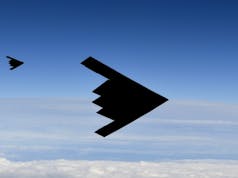
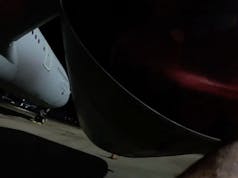

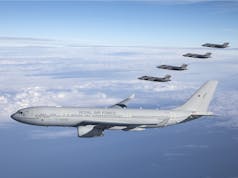
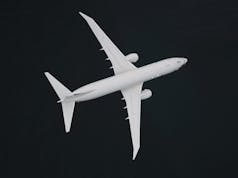
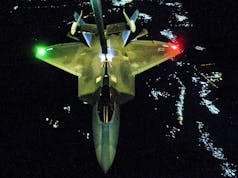


Whilst I understand the need for a specialised/modified helicopter for flying the president around, what i’m Not getting is the number of helicopters required, so this is an initial order for 6 from a requirement of 23?? (As per Wikipedia)
The overall budget is nearing $5Billion USD (for the projected 23 airframes) which makes these very very gold plated helicopters…. could have spent the money more wisely?Surely they could buy an off the shelf business/vip interior fit out copter, and bolt on some military defensive systems and secure communications systems…
Spending the money on Airforce One to make it a flying Whitehouse, I get, but not these helicopters….
It’s not just the President.
This is to support the National Command Authority.
The mission is to get the President and others away from Washington in the event of a nuclear attack. Multiple helicopters are required.
Just to put this into context the total order will be for 23 aircraft to act as ‘Marine One’ helicopters. Yes 23 aircraft to ferry one Head of State. And I really could not miss the opportunity to remind people that originally this contract was for EH101 Merlins (called VH-71 in USMC parlance) but Obama cancelled the contract ‘to save money’ in 2009 after 9 airframes had been delivered from the UK. And then promptly procured Sikorsky aircraft … Sikorsky of course who had been beaten to the contract by Lockheed Martin and Westland Agusta in 2005. Sort of groundhog day for what happened with the USAF Tanker deal the previous year.
The Canadians were well pleased though as they bought those Merlins at a much reduced price given they operate the Merlin as the ‘Cormorant’ on ASR duties. They were originally going to break them as spares but I understand they decided to fly them. The Canadians of course have had a very troubled introduction of the same Sikorsky S-92 aircraft (known as CH-148 Cyclone in Canada). Originally contracted for full delivery in 2008 repeated delays and faults meant that only 8 interim aircraft were delivered in 2015 and as of 2018 no full spec aircraft had been delivered out of the original order for 28. ‘Word is’ the Canadians were / are close to cancelling the whole charade. It’s long been alleged the Liberal government in 2004 chose Sikorsky to avoid the embarrassment of buying the Agusta Westland 101, which the Conservative government of Brian Mulroney ordered, and was famously scrapped by Jean Chrétien’s Liberal government in 1993.
Don’t you just love politics?
And now, the USA having told Europe to increase miltary spending, they’re complaining it’s evidently unfair that US defence companies aren’t being more or less guaranteed a share of the increased procurement cake.
You are a bit behind the times with your info on the CH-148 Cyclone Chris H, the RCAF has nine Block 2 Cyclones with the interim Block 1 in the process of being converted to Block 2.
Block 2 is the mission capable variant with the mission systems integrated and a number have successfully been on international deployment. Block 2.1 is in the process of being developed and will include an enhanced gearbox that will resolve the issue of a short life of 600hrs with the new one having 2000hrs.
Whilst the Canadians did toy a few years back with cancellation the CH-148 Cyclone is now maturing to the point that its worst issues are behind it. It was certainly a debacle that could have been avoided but that is water under the bridge now, there is nothing inherently wrong with the S-92. Canada has 17 CH-148 out of the 28 ordered now, 9 are Block 2, four are Block 1 in the process of upgrade to Block 2 and the remainder are Block 1 that will be converted in due time.
@Fedaykin – thanks for the update. I was using late 2018 information so this is good to see. I am not sure having just 9 CH-148 some 11 years after 28 should have been delivered means there is nothing inherently wrong. the ‘Block 1’ aircraft are the ‘interim’ spec. that allowed training and conversion but little else.
Forgive me waving my little Union Flag here but these are two major contracts that the Merlin had won, politicians cancelled for ‘whatever reason’ and Sikorsky benefited despite being the beaten competitor first time round. And then when they are gifted the two deals they comprehensively screw up …
But as I said such is politics but still very sad for Westland Agusta don’t you think?
In respect of the Canadians my personal view is they should have stuck with the Merlin in the first place and it is a degree a bit ironic and fairly absurd when you think about it that they stuck with the CH-149 for SAR. The RCAF will be operating an AW-101 and S-92 variant in parallel for two different missions that would more logically be done by one type. The politics that revolve around dropping the Merlin in the first place is more a reflection of Canada and its Kafkaesque procurement process and interference by political issues of the day. The Liberal party campaigned on making cuts to expensive military programmes if they won and focused on the Helicopter replacement programme with opposition leader Jean Chrétien calling it a “Cadillac”. Jean Chrétien made chopping the Merlin a cornerstone of his campaign in the 1993 Federal election and carried through regardless of the consequences when he won.
In respect of the Marine One contract I don’t think the Merlin should have been bid in the first place, the psychology of flying around the President in a foreign designed and developed helicopter even if it was built in the USA was too much of a mental Rubicon th cross for many Americans. The programme was an utter nightmare for Augusta Westland anyway. After Lockheed Martin won the contract with their winning bid using the Merlin the DOD and USMC started to ask for capabilities to be added to the type. The current VH-3D has a pretty basic communications fit, its job is to fly the President around and if he needs to communicate with US forces that can be done on Airforce One or similar platforms. The DOD decided that they wanted a Command and Control fit as good as or even better than that fitted on Airforce One. Of course whilst the Merlin is a big helicopter it isn’t a 747 so costs and weight started to balloon. What made it even worse is the DOD would come to Lockheed Martin and say we want this electronic box fitted, so they would then go to Augusta Westland and ask what needed to be done to do this. The engineers at Augusta Westland would then reply “How big? How Heavy? What are its Electrical Requirements? Does it transmit any RF?”. Lockheed Martin would then go back and ask the DOD who would give the information but with the stipulation that they couldn’t tell Augusta Westland as it was a ‘National Secret’ and a ‘foreign company could not be told’. This caused a few problems getting things done….
It was probably for the best that Obama pulled the plug on it, I have some suspicions about the crazy requests from the DOD. Funnily the VH-92 is not required to have the complex Command and Control fit and I wonder if certain people withing the Pentagon were using the requests for it be fitted to the Merlin as a way to scupper the programme so a Sikorsky could be selected.
@Fedaykin – On your last point first the added irony is that Lockheed Martin, Westland’s US partner, bought Sikorsky in 2015 for $9 Bn. And those sort of deals do not happen in 10 minutes. I do take your point that it was a bit incongruous for the US Navy to order a foreign aircraft to demonstrate the USA’s image around the world but then the Merlin was and remains the best at what it does and why it has been around so long. I think Bush was OK with it when it was ordered as we had stood by the Americans after 9/11 and went into Iraq with them. But thats a whole different discussion.
I think as far as Canadian military procurement is concerned for many years it was a case of the Left order it and the Right cancel it etc etc. Some of the procurement stories would make a good novel. I was therefore quite surprised that T26 survived that lengthy bidding process. Having said that when is the next Canadian election?
You have to question whether, due to the delays, that the CH-148 in its Block 2 guise is even close to the Merlin HM.2 standard. Which has been developed and delivered in the time frame that the CH-148 was delayed…
I fear the Canadians have got a helicopter whose systems are already halfway towards obsolescence…
Thanks for reminding everyone about this Chris. First thing on my mind when I saw the headline.
Looks like a big improvement upon the long serving current Helo. I think this is a good size/performance aircraft compared to the Merlin which was too big and really too much helo for this requirement.
But that could have already been in service for half the price.
@Paul Bestwick – and 10 years sooner. And therein lies the faultline of delaying any military project to supposedly ‘save money’…
Can anyone tell me if we were looking to purchase these for the QE class & SF?
Thank you in advance.
Paris Air Show 2019: Boeing warns ‘last chance’ to buy V-22
https://www.janes.com/article/89253/paris-air-show-2019-boeing-warns-last-chance-to-buy-v-22
In short. No. There is no money. The UK, if it ever goes for a tilt-rotor will go for V-280 when that arrives.
Obama canceled the Merlin deal not to save money but to avoid having a foreign aircraft conveying the president. Some partnerships are more equal than others.